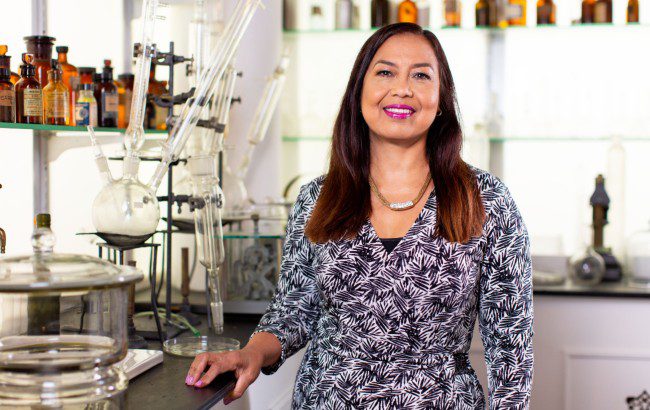SB meets… Carol Homer-Caesar, Angostura
The Angostura master blender leads an all-female blending team that proudly creates Trinidad and Tobago’s award-winning rums and bitters.

How did you become involved in the rum industry?
When I started, in 1995, I was head of the laboratory doing quality control, such as monitoring the raw materials used to make rum. I also moved into the sensory side of the rum-blending process, and I would carry out sensory evaluations and chemical testing on some of the aged rums. I actually did the first premium rum range that Angostura ever had: the Angostura 1824, 1990, three-, five- seven- and 15-year-old rums. The first one was done around 2000; after that I went on to do limited editions. In 2013, Angostura took the decision to name me master blender, even though I was doing all the work before.
Who is your core team?
We are four persons, all ladies. Amanda Khan is our new product development manager; Narissa Joseph is our blending manager; and Ann-Marie O’Brien is our chief operating officer, and she has a lot of experience in blending. She has been responsible for blending rum and bitters.
How does blending rum and bitters differ?
With blending rum, you have to start with your materials. Ageing naturally, we go in and evaluate the casks of aged rum from time to time. We add a little caramel to standardise the colour. For the bitters, it’s very different in that we have to use botanicals. The botanicals go through percolation where all the aromatic flavours are extracted using alcohol. We then add ingredients – sugar, caramel and alcohol – because the whole extraction is done using alcohol.
Are you seeing more interest in rum these days?
I believe so. Our rum association, the West Indies Rum & Spirits Producers’ Association, does a lot of ground work. It goes globally seeking partners or other companies who will partner with it to help promote rum, not just in the Caribbean but around the world. Rum started in the Caribbean, and Caribbean rum is now being promoted through social media and international spirits competitions. Over the past 10 years, we have won awards for our rums.
What was it like to work on the latest limited edition release, Angostura Zenith?
When we found the Caroni rums, we knew we could do something phenomenal with them. But we still wanted to give it more time in the cask, so that was three years ago. It took time; Caroni rum is a heavier rum than Angostura. It’s more aromatic, more deeper flavours than a lot of rum. Caroni would be high in things like vanilla from ageing, high fruitiness, esters, and it tends to have this floral bouquet.
In 2019, we did not want to just go and do the blend, and say ‘yes, this is it’. We wanted to develop this ultra-premium rum – because we knew it was going to be ultra-premium – and make it truly the best we could possibly get. I am extremely proud of what we have produced in Angostura Zenith.
Are consumers becoming more interested in high-end bottlings?
I would say so because other companies are making rum, such as in Barbados, and these are being sold for about £2,000 (US$2,362). Even our rare rums, like Angostura Legacy or Infinity by Angostura, attract great interest from people.
What is your favourite way to drink Angostura?
I enjoy Angostura 1919 with coconut water. If I want a sipping brand, I would go for 1797, which is 15 years old. I also enjoy a cocktail, a Mojito, but I would not go for a cocktail for my first drink. I would go for 1919 and coconut water.
What has been your favourite project to work on?
A lot of the limited edition rums were amazing to work on, apart from the fact that it can be stressful, especially when we change the packaging.
What is your favourite thing about working with Angostura?
What I love is I am very passionate about creating rum blends. I love to come into work at around six in the morning when everything is so quiet. I just go through my rums and come up with formulations; I find that so exciting because it’s about understanding the chemistry of these rums. I find it fascinating how you start with a totally colourless liquid, then you put it in the cask, and you get the wonderful colour of the rum, and these wonderful flavours.
Related news
Top 10 spirits launches in June
